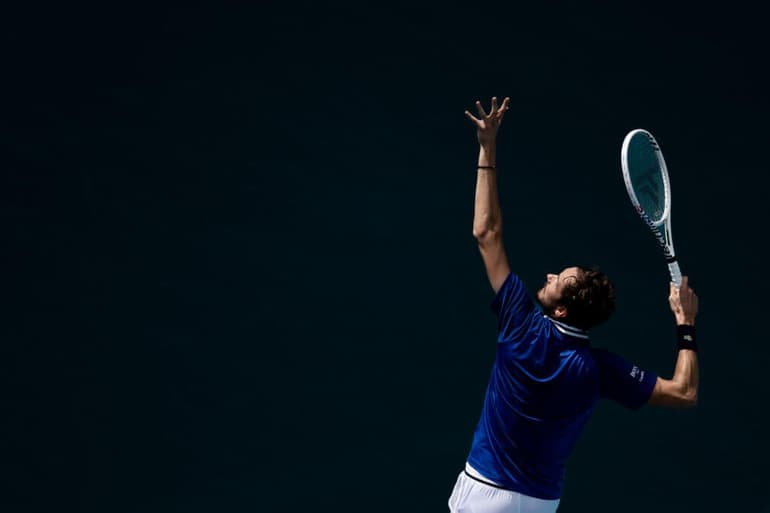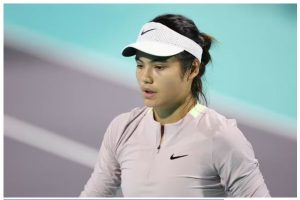
MIAMI GARDENS, Florida — Daniil Medvedev had a problem.
For the better part of five years, his career had followed an ever-upward arc that carried him to the No 1 ranking in February of 2022. Then came seven months of frustration and premature exits from tournaments as young bucks like Carlos Alcaraz and Jannik Sinner got better and more powerful with each passing month.
As the year closed, he was on his way to tumbling out of the top 10. That’s when Medvedev, a player blessed with a curious brain and an appetite for experimentation, decided something had to change. He didn’t know what, but something, so when his string guru at Tecnifibre, his longtime sponsor, suggested he try a new, more flexible string fresh out of the factory that might give him more power without sacrificing control, he figured: sure, why not?
“I was honestly saying I was going to try for one day and I was going to say, ‘That’s not for me, I’m going to come back to my old strings,’” Medvedev said late Wednesday in the bowels of Hard Rock Stadium after setting up a semifinal showdown with Sinner. “I hit with it and I was like, ‘Seems to be working well.’”
Three months later, after a rocky start in Australia, Medvedev had won four tournaments, including the Miami Open, and made the finals of the BNP Paribas Open at Indian Wells, both Masters 1000 events, just below the level of a Grand Slam. He made the finals of the U.S. Open in September and finished 2023 ranked third in the world.
This off-season, he added even more flexibility and power to his strings. He made the finals of the Australian Open and Indian Wells. He’s two wins away from defending his Miami title. So far, so good.
It seems so obvious in retrospect, a classic Occam’s Razor solution.
Tennis players fire coaches and make radical shifts in their approaches at the drop of a hat. They explore the depths of their experiences on and off the court with sports psychologists, searching for some psychodynamic answer for why they aren’t hitting more winners. Sometimes, though — and weekend warriors hacking away often make this same oversight — the quickest fix involves the one piece of equipment that actually makes contact with the tennis ball.
“I’ve dedicated my life to these products,” said Laurent Blary, the director of product development at Tecnifibre, a veteran tennis equipment executive who has probably spent more moments thinking about strings than maybe any human. “Tennis is always about different kinds of compromise. You have to adjust your equipment and your game depending on the opponent.”
Some of the best ones do that.
Daniil Medvedev took a week to fully commit to the string change, though he had basically made up his mind after the first hitting session. Blary had wired the court with equipment to track the speed and location of the balls, as Medvedev tested the strings on identical rackets without knowing which one he was using. The ball felt better off the new, softer strings, and the data showed it was moving a couple of kilometers an hour faster.
At a tournament early in 2023, Iga Swiatek, the women’s world No 1 and another Tecnifibre client, noticed that Medvedev was playing with a different color string, and winning – a lot. Blary said she quickly reached out and asked about the strings, looking for an edge. She now uses a similar but slightly more flexible version of Medvedev’s main strings.






